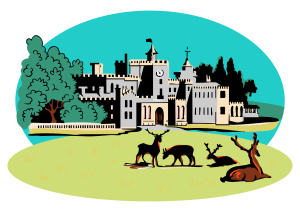Play Audio Story
Audio clip 2 available here on audio player.

For the past decade, Charles Peregrine Courtenay, the 19th Earl of Devon, has overseen Powderham Estate with a great devotion to preserving its rich history. Driven by a passion for both its heritage and its place within the natural landscape, he dedicates himself to the stewardship of the land, water, and people connected to the estate. Through his efforts, these grounds continue to thrive, offering a place where future generations can immerse themselves in the vibrant history of the Exe Estuary. Here, Charles reflects on the interconnectedness of Powderham Estate with the land and communities surrounding it.
This trail marker is situated beside the Exe Estuary sign overlooking the waters of the estuary at the viewpoint on the Exe Estuary cycle path.
What 3 Words: ///screen.toffee.buzzards
Charles: It’s an awful lot of very hard work running a business here and such. But that’s also a real privilege and an opportunity as well, keeps me busy. I actually live within Powderham in the Castle itself. One of the challenges that presents is that it’s a very public space and the lack of privacy is something that can be challenging at times and needs to be monitored and worked on. Then the challenges of living in an intertidal habitat on the edge of an estuary presents lots of issues. It’s a corrosive place, there’s lots of sea air and storms, and so there’s a lot of time spent maintaining, shoring up and replacing flood defenses, etcetera, which is a challenge of living in such a mobile place.
The relationship with community is one thing that I’ve found, as you can tell, I quite enjoy engaging with stories and with people and such. I think that’s a generational shift. My dad was much shyer than me, but also there was very much the “them and us” idea in those days, that was a bit more of a conflict, whereas I see we’re very interdependent. The business, the castle, the estate, and the estuary, is really interdependent with the community that lives around it. I think that’s an important realisation. You can’t do it on your own, you can’t do it to the exclusion of others.
You’ve seen climate change-related impacts. We have egrets now up and down the estuary, which we obviously never had as kids. They appear quite exotic. We see Egyptian geese as well. You see a bit of a change in the residents. I think there’s been quite a drop off in the traditional land uses. There used to be salmon netters on the Exe and quite a lot more perhaps foreshore wildfowling.
The drop-off in salmon is an older story than mine but my dad remembers catching two or three salmon before school on a weekday at Salmon Pool, which is a lovely fishing pool above the weir in Exeter. Of course, you don’t see any salmon in the river now. It’s a river of fish, that’s what the Romans called it, it was the fishy river. Great picture in Topsham of the largest ever line caught salmon was about a 60-pound monster. It was a great picture of the chap who caught it. It’s bigger than him, pretty much. The tragedy of the loss of fish in the estuary, that’s been in my lifetime, but probably started before it. That’s one of the biggest changes.
Backward to Marker 1 – The Trouts of Topsham Boatyard Forward to Marker 3 – The Steward of the Dues